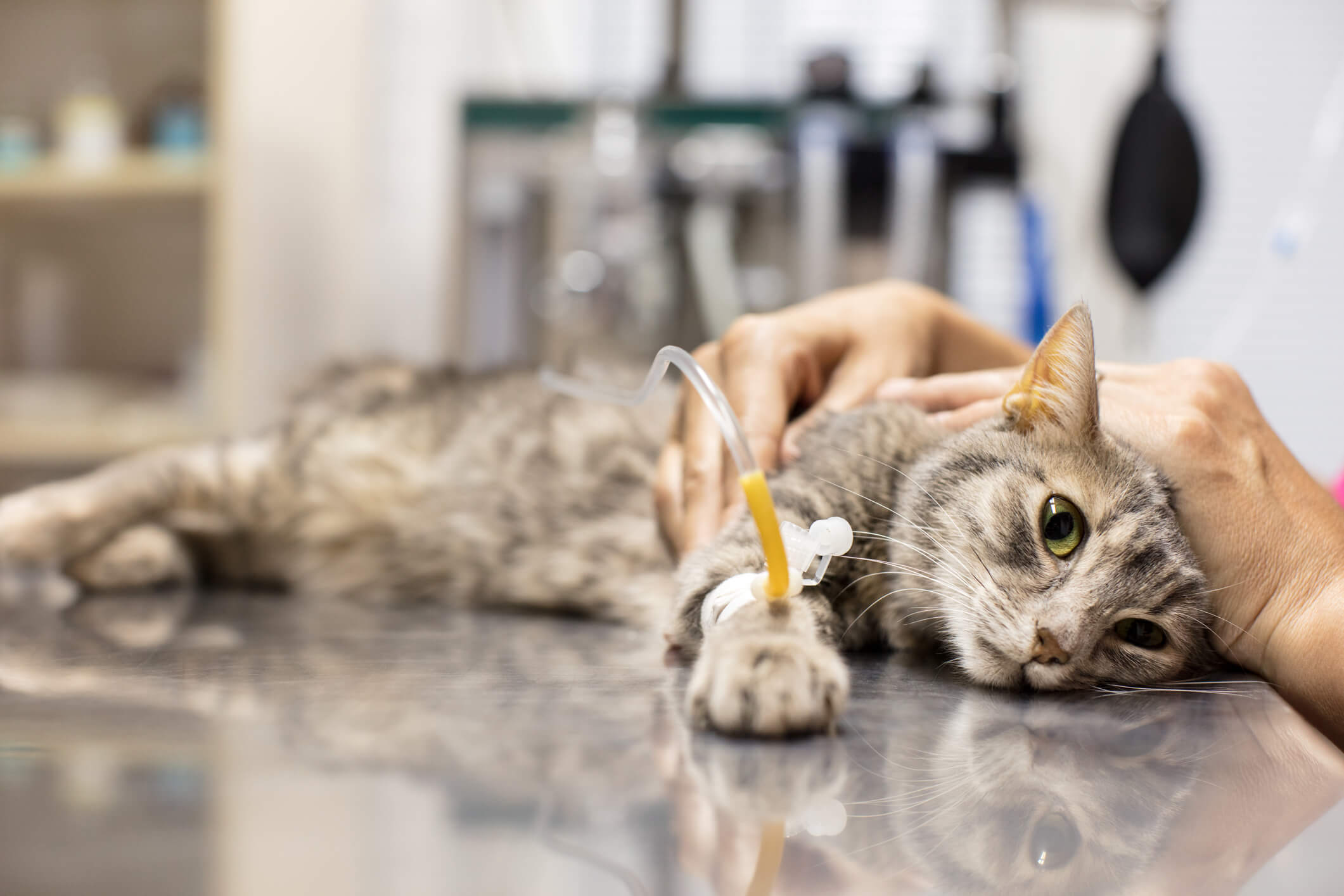
5 Signs and Symptoms of Fatty Liver Disease in Cats
A cat owner might notice one day that their furry friend is looking a bit trimmer than usual. Upon inspecting the food bowl, they’ll discover it’s been practically untouched. If you’ve noticed similar behaviors, your cat might not be just a picky eater. Anorexia and weight loss are actually some of the many symptoms associated with the all-too-common condition called fatty liver disease.
The dangers of fatty liver disease
Hepatic lipidosis is commonly referred to as fatty liver disease. The illness earned its nickname due to the excessive fatty deposits that build up among the liver cells. Fatty liver disease occurs when the cat isn’t receiving enough nutrients, particularly protein. Protein is a cat’s key source of energy, and a lack thereof triggers the body to burn fat cells, instead.
Cats aren’t designed to use fat as an energy source, but when a cat experiences malnutrition, their body has no other choice. Fat burning can overwhelm the liver and prevent it from performing other key functions like making digestive chemicals, detoxifying the body and breaking down red blood cells. In severe cases, fatty liver disease can lead to complete liver failure.
The liver is responsible for many vital roles. Excessive fat surrounding its cells means the liver can’t carry out all the jobs necessary for survival. No other organ in a cat’s body can do what the liver can do. Once the organ shuts down, fatty liver disease can quickly become deadly.

Symptoms you should be aware of
Early detection of fatty liver disease can save your cat’s life. Pet parents should familiarize themselves with the signs of fatty liver disease, even if their cats seem perfectly healthy. Contact your vet immediately if you notice any of the following symptoms:
- Anorexia: Fatty liver disease comes about when the body experiences a lack of nutrients. Anorexia leads to malnutrition and is commonly observed in cats right before they develop fatty liver disease. Bouts of anorexia can last anywhere from several days to several weeks. During this time, cats have little to no appetite at all. If your cat isn’t eating, speak with a vet before other symptoms arise.
- Weight loss: Anorexia is closely followed by sudden, excessive weight loss. Weight loss is a symptom of fatty liver disease because low protein levels trigger the burning of fat stores. While losing a couple of pounds is often necessary for cats living with obesity, the process of losing weight must be done gradually in a controlled manner. Weight loss that results from malnutrition is never a good sign.
- Jaundice: Jaundice is a condition where the skin, gums and whites of the eyes take on a yellowish appearance. Fatty liver disease leads to jaundice in cats because that yellow color is the pigmentation found in red blood cells that weren’t broken down properly. Jaundice is a sign that the liver can no longer perform its vital functions and is beginning to shut down.
- Lethargy: Not surprisingly, cats who aren’t getting enough protein will have low energy levels. They might appear sluggish and ignore your attempts to strike up a play session. A cat suffering from fatty liver disease will also bow their head, as the neck muscles no longer have the strength to hold it upright. As a result, muscle weakness often accompanies lethargic behavior.
- Indigestion: Cats with fatty liver disease commonly exhibit signs of indigestion like nausea, vomiting, diarrhea and constipation. They might only show one of these symptoms, but it’s possible for all of them to be present. A pet parent can tell if their kitty is feeling nauseous if the cat displays excessive drooling. Signs of constipation include straining to defecate or small clumps of feces in the litter box. Indigestion can indicate a whole range of health problems, which is why a professional diagnosis is needed to determine where your cat has fatty liver disease or something else.
Fatty liver disease is all too common in cats, but it doesn’t have to be life-threatening. As with any disease, prevention is key. Learn about any underlying health conditions your cat may have and avoid creating stressful environments that could trigger a loss of appetite. If your feline friend is showing one or more of these symptoms, it’s not too late. Prompt medical attention and a solid treatment plan will ensure your kitty makes a full recovery.


